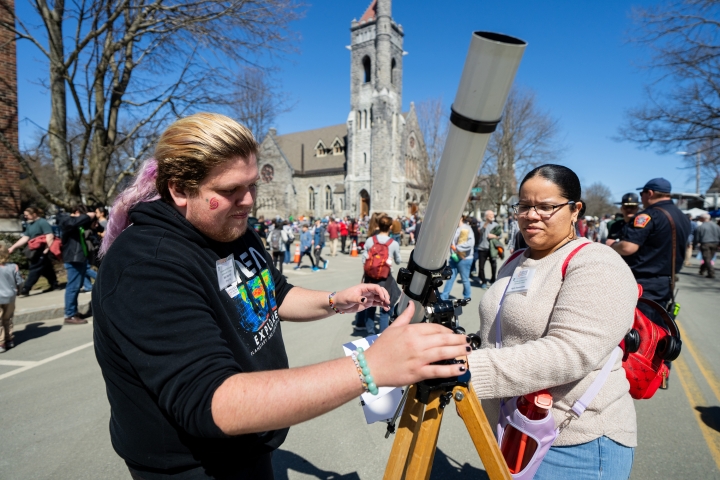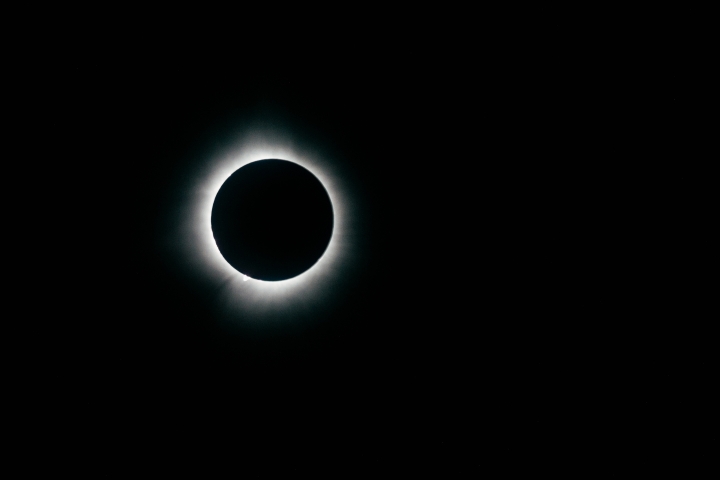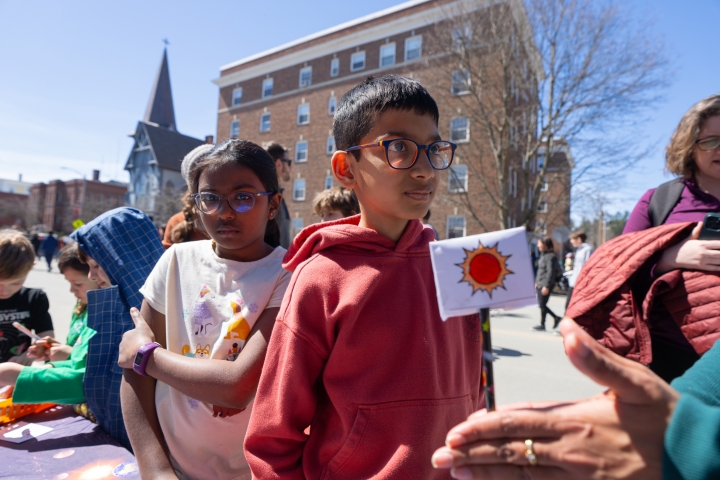It was just past 9 a.m. on Monday and a slow trickle of people were making their way toward the Fairbanks Museum & Planetarium in St. Johnsbury, Vt., as volunteers took their places along the road.
My 10-year-old son, Aarik, noted that the “unsuspecting sun” was steadily climbing the cloudless blue sky.
“What a great day for an eclipse!” people exclaimed to each other as they gathered in excited groups on the lawns and sidewalks along Main Street.
St. Johnsbury and a surrounding swath of northern New England were on the path of totality, the area that would see the moon fully block out the sun for about a minute and a half beginning at 3:28 p.m., the first time since 1959 that New Hampshire had experienced a total eclipse.

By noon, the crowds had ballooned and filled up the entire block. Working with museum staff, a group of 35 Dartmouth graduate and undergraduate students led by Brian Chaboyer, professor of physics and astronomy, set up activity stations on the road outside for the Sun Moon You eclipse event.
There were eclipse-related crafts for kids, information booths, and solar-viewing telescopes trained to project the sun’s image—spots and all—onto a piece of paper.
“The prediction for sunny weather means we have a very good chance of seeing one of the most spectacular celestial events anyone can witness,” said Chaboyer, who had witnessed one other total solar eclipse in 1979 as a young teenager growing up in Winnipeg, Manitoba.
At one of the craft stations, Maria Hidalgo ’22 and Jack Duranceau ’23, who as a physics and astronomy major last year discovered two exoplanets, were helping children create the illusion of an eclipse.
“I didn’t expect that so many kids would stop by. It’s been really busy,” said Hidalgo.
The Dartmouth crew also brought a special solar telescope designed to pick up light emitted from hydrogen atoms, which make up the bulk of the sun. Viewers could see a dynamic, high-resolution image projected on a computer monitor, showing solar prominences—fiery loops of plasma around the sun’s edge—and sunspots on the surface.
Aarik wasn’t the only member of our group excited about what we were about to experience. As with many science enthusiasts, my interest in physics and astronomy were sparked by events like these—watching the TV broadcast of a total solar eclipse elsewhere in India and sighting the comet Hale-Bopp with my father from our rooftop. My husband, a computer science professor, was joined by a colleague and her daughter. For all of us, it was the first time to see a total eclipse.
The first gasps were heard at a quarter past two when the crowd spotted the faintest sliver of the moon’s shadow creep over the sun’s edge. The next hour was a multisensory experience—the temperature dipped, and the light dimmed as the moon slowly shut the sun out.

The 90 seconds of totality generated collective awe. We tore off our eclipse glasses to revel in the rare cosmic alignment that turned the sun into a smoky ring of light and caused planets to pop up in the afternoon sky.
“I didn’t think that just the sun’s corona could give as much light as it did. I thought it would be very dark,” Aarik said later.
He said the “diamond ring” of the eclipse, where a dazzling burst of sunlight flashes just as the sun begins to reappear from under the moon’s shadow, was the highlight of a memorable day.
“It was so awesome.”
